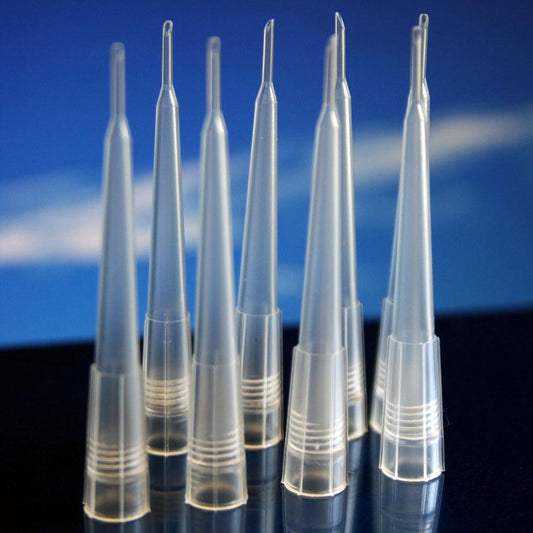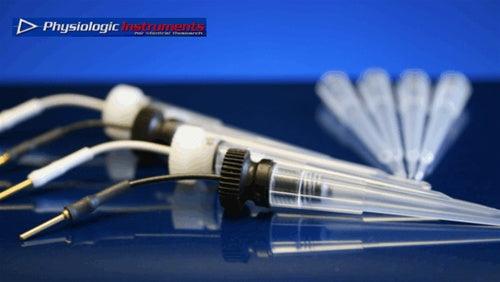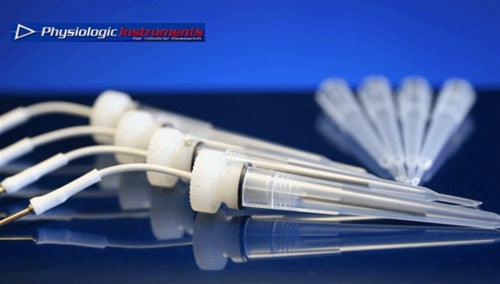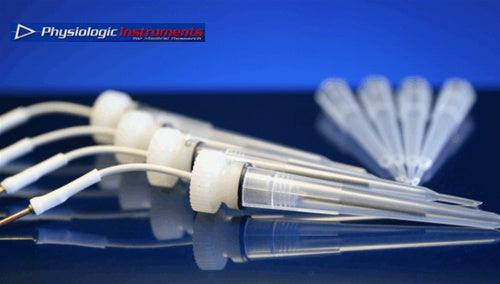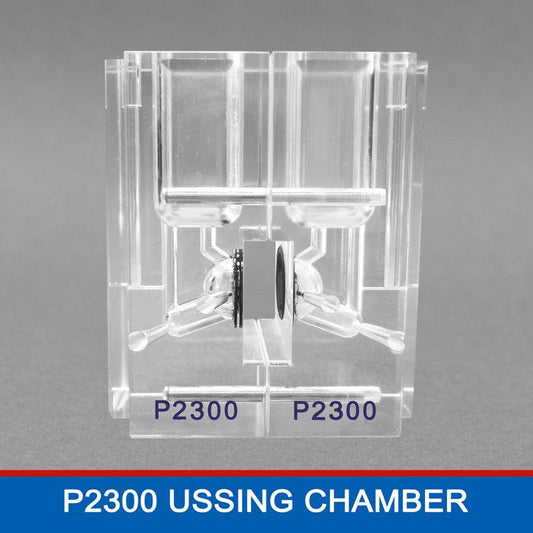If your short-circuit current (Isc) looks more like an EKG than a clean trace, this guide is for you. Below we walk through the most common causes of Isc instability in Ussing chamber systems and give practical fixes you can apply today—no arcane wizardry required. (Though properly grounded wizards are welcome.)
What “unstable Isc” really means
Isc represents the net transepithelial ion transport measured under voltage clamp. “Unstable” typically shows up as:
- Baseline drift (gradual upslope/downslope unrelated to biology)
- High-frequency noise (electrical interference or poor connections)
- Step changes / edge leaks (mounting or tissue integrity issues)
- Thermal / gas artifacts (temperature and aeration induced swings)
In well-behaved preparations, you should see a stable baseline (±1–2 µA/cm² over ≥5–10 minutes) with clear, stepwise responses to agonists/inhibitors.
Required reading & tools
- VCC MC8 Voltage/Current Clamp with low-noise headstage
- Fresh agar bridges & calibrated electrodes
- Software: Acquire & Analyze (baseline fit, drift notes, annotations)
- Chamber: EasyMount Ussing Chamber — P2300
Lab joke: If your baseline drifts toward the coffee machine, it’s just following the lab’s strongest gradient.
The Big Four: Causes vs Fixes
| Problem | Signature on trace | Root causes | Fast fixes |
|---|---|---|---|
| Electrical noise | High-frequency ripple; 50/60 Hz hum | Ground loops, unshielded cables, motorized stir bars, nearby power bricks |
Do: Single-point ground; separate clamp & computer power; route headstage cables away from motors; enable light digital filtering in A&A. Avoid: Over-filtering (you’ll smear genuine responses). |
| Baseline drift | Slow monotonic rise/fall over minutes | Electrode polarization, bridge aging, temperature ramp, gas flow changes | Re-chloridize electrodes; refresh agar bridges; stabilize perfusate temperature (±0.1 °C); set gas to constant flow; wait 10–15 min pre-baseline. |
| Edge leaks / mounting | Sudden step changes; sluggish responses; low resistance | Poor tissue seal, tears, gasket mismatch | Inspect tissue edge; use correct gasket thickness; re-mount with even compression; confirm TER before starting. |
| Solution & perfusion artifacts | Jumps when adding drugs; oscillations | Osmolarity mismatch, pH drift, bubbles | Match osmolarity; pre-equilibrate solutions; degas and pre-warm; use bubble lifts; add vehicle controls. |
Step-by-Step: A Clean Isc Baseline in 10 Minutes
- Warm & gas buffers to target temperature; equilibrate for ≥20 min.
- Prepare electrodes: re-chloridize Ag/AgCl, check offset in open circuit, then in symmetric solutions.
- Mount tissue in the EasyMount P2300, ensure gasket alignment; verify no edge frays.
- Stabilize for 10–15 min with constant gas flow and temperature; confirm TER/TEER is within expected range.
- Zero and clamp using VCC MC8; set minimal filtering first.
- Record baseline in Acquire & Analyze; annotate any tweaks (gas, temperature).

Diagnose by Pattern: What Your Trace Is Telling You
1) Sawtooth micro-oscillations (0.5–5 Hz)
Often caused by peristaltic pumps or stirrer coupling. Isolate the motor from the headstage path; use shorter, shielded leads; consider bubble lifts to maintain mixing without motors.
2) Slow negative drift after opening gas
Check electrode polarization and pH—CO2 can shift pH if buffers are weak. Strengthen buffering or pre-equilibrate longer.
3) Big jump at drug addition
Rule out osmolarity changes and vehicle effects. Always add vehicle controls; pre-warm additives; inject slowly to avoid local concentration spikes.
Calibration & Verification Workflow
Voltage electrode (TEV)
- Offset in symmetric solution (±0.2 mV)
- Check 3-point potential with known salt bridges
- Replace bridges weekly (or sooner if noisy)
Current electrode
- Verify output compliance; inspect for bubbles
- Confirm clamp accuracy with known resistors
- Keep cables short and routed away from motors
Quality Metrics You Can Trust
- Baseline stability: ±1–2 µA/cm² over ≥5–10 min
- SNR: ≥10:1 during agonist peak vs baseline SD
- Response reproducibility: ≤10% variance across repeats
- TER/TEER pre-criteria: within tissue-specific expected range
Recommended Setup (with Internal Links)
- Ussing chamber system — EasyMount P2300
- Voltage/current clamp amplifier — VCC MC8
- Data acquisition software — Acquire & Analyze
- Read next: Complete Ussing Chamber Guide, Ussing Chamber Setup & Calibration, and Voltage Clamp Explained
FAQ
How much filtering is “safe” without hiding biology?
Use the minimal low-pass that removes obvious mains hum (e.g., 30–50 Hz for typical preparations). Compare raw vs filtered in Acquire & Analyze and document the setting in your methods.
Should I stir or bubble?
Stir bars can inject EM noise. If mixing is required, bubble lifts or low-EM pumps can help; always verify noise with the stirrer off to compare.
What if my TER is low but Isc looks great?
Edge leaks can mask as “good” Isc. Validate morphology and seal; use tracer flux or dye to confirm integrity.
Ready to stabilize your Isc?
Checklist: Baseline ≤ ±2 µA/cm² · Single-point ground · Fresh bridges · Pre-warm & pre-gas · Verify TER · Minimal filtering · Annotate every change.

